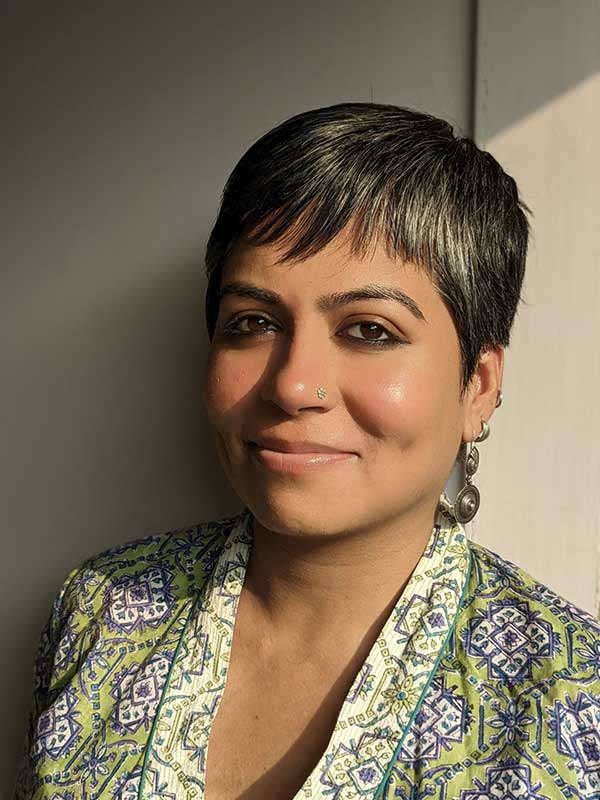
Copyright © Tanvi Mishra
1. For what program were the funds given? Who were the beneficiaries?
The funds were provided for the production of three artists’ works for the Louis Roederer Discovery Award at Les Rencontres D’ Arles 2023. The beneficiary artists were Vishal Kumaraswamy, Md Fazla Rabbi Fatiq, and Philippe Calia.
2. What direct impact did the program have on the attendees / beneficiaries in the short term?
The structure of the Discovery Award at Rencontres D’ Arles mandates that artists apply with a supporting institution that would fund the production of their artworks and cover the shipping costs to Paris. Since two of the beneficiaries (Vishal and Md Fazla) applied with nonprofit institutions (an artist collective and an educational institution, respectively), they did not have access to funds to cover this cost. In the case of Philippe, even though he was supported by a gallery, the funds required for his production and shipping fell short of the gallery support.
For all three of the beneficiaries, the funding by PhotoSouthAsia (a project of the MurthyNAYAK Foundation) enabled them to conceive their exhibition in the format we envisioned without being curtailed by budget considerations.
This edition of the Louis Roederer Discovery Award was one with many firsts – the first non-European curator to be appointed and the first majority representation of artists from the Global South. Ninety percent of the artists in the exhibition identified with the Global South, and it was important that we produced work at the standard of the exhibitions in the rest of the festival. This funding made it possible for the artists to show their work at par, in both concept and production, with other international artists.
3. What do you believe the impact could be in the long term?
The longer-term impact of such an edition can be twofold. First, for the international photography industry to take note of the quality work and range of practices that exist outside of the Global North or by authorships that have been historically under-represented on these platforms. This can lead to more professional commissions and opportunities for the artists. Secondly, by enabling artists from outside Western systems to show their work in these spaces, transnational dialogs can be fostered which may allow us to have more complex and nuanced conversations about regions that historically have been documented through the visitor’s roving photojournalistic or documentary lens and less by the people who inhabit these areas.
While the former is a step in the much larger battle towards more equitable opportunity distribution in the lens-based arts, the latter can expand the discourse around society by accommodating a multitude of voices whose perspectives have not been privileged by the industry till now. The opportunity for the featured photographers to show at the Rencontres D’ Arles also provides professional networking possibilities and fosters collaboration with other artists in the international scene who are exhibiting or visiting the festival. This can have long-term impacts on their practice — not just access to resources, but also to knowledge systems beyond their own.
4. Do you see the potential for a ripple effect in terms of impact on the broader community? Who else might benefit and how?
The hope is that such an edition, where artists’ works are showcased in a prominent venue at one of the most prestigious photography festivals, will motivate other photographers from our region and community to apply to such opportunities in the future. Since these institutions historically have not showcased works from authorships beyond Europe and North America en masse, many artists feel that these places will not open their doors for us. While there is some diversity emerging across the arts, it sometimes feels tokenized, or like too little too late. Repeated instances of more equitable distribution of opportunity can (eventually) lead to a more vibrant atmosphere of discourse and practice.
5. How does the funding benefit your organization?
I work as an independent curator, and one of my focus points is to work on representation within image-making. Since I am not attached to any one institution, organizations like PhotoSouthAsia enable those like me — who do not have institutional resources at their disposal — to pursue projects that may require us to come with our own avenues of funding. In making these resources available, curators and educators like me can hope to devise and execute projects independently, proposing collaborations that otherwise may not find a place within prefixed institutional mandates or budgets.
Copyright © 2024, PhotoSouthAsia. All Rights Reserved.
Tanvi Mishra works with images as a photo editor, curator, writer, and educator. Among her interests are rights and representation in image-making, research strategies in visual culture, as well as the notion of truth / fiction in photography, particularly in the current political landscape.
Tanvi has served as the Creative Director of The Caravan, a journal of politics and culture. She is part of the photo-editorial team of PIX, a South Asian publication and display practice. She has curated multiple exhibitions, including the Louis Roederer Discovery Award for the 2023 edition of Recontres d'Arles. Tanvi has also been part of the curatorial teams of Photo Kathmandu, Delhi Photo Festival, and BredaPhoto.
Tanvi's writing on photography has been published in various platforms including Aperture, FOAM, and 1000 Words. She has served on multiple juries, including World Press Photo, Chennai Photo Biennale Awards, and the Catchlight Global Fellowship. At the time of this writing, she is part of the International Advisory Committee of World Press Photo.
05.Feb.2024
 Photograph © Aditya Kapoor
Photograph © Aditya Kapoor
Also on PhotoSouthAsia, Tanvi Mishra's essay, The Great Upheaval
20 November